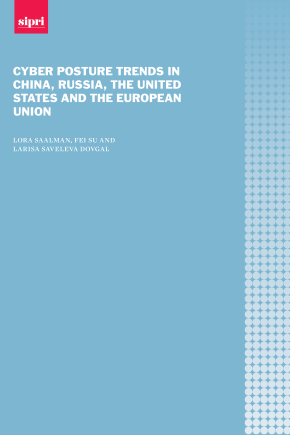Cyber Posture Trends in China, Russia, the United States and the European Union

Current understanding of the cyber postures of China, Russia, the United States and the European Union (EU) merits re-evaluation. It is often assumed that China and Russia are aligned, yet this is not always the case. Unlike Russia, which has an ongoing focus on information security, China’s official documents incorporate both information security and cybersecurity concerns that are similar to those of the EU and the USA. Moreover, while often paired, the EU and the USA have differing regulatory structures in cyberspace. Further, both actors increasingly mirror Chinese and Russian concerns about the impact of information warfare on domestic stability. By examining key trends in each actor’s cyber posture, this SIPRI Research Report identifies points of convergence and divergence. Its conclusions will inform a broader SIPRI project that maps cyber posture trajectories and explores trilateral cyber dynamics among China, Russia and the USA to assist the EU in navigating future cyber escalation and enhancing global cyber stability.
1. Introduction
2. China’s cyber posture
3. Russia’s cyber posture
4. The United States’ cyber posture
5. The European Union’s cyber posture
6. Conclusions


